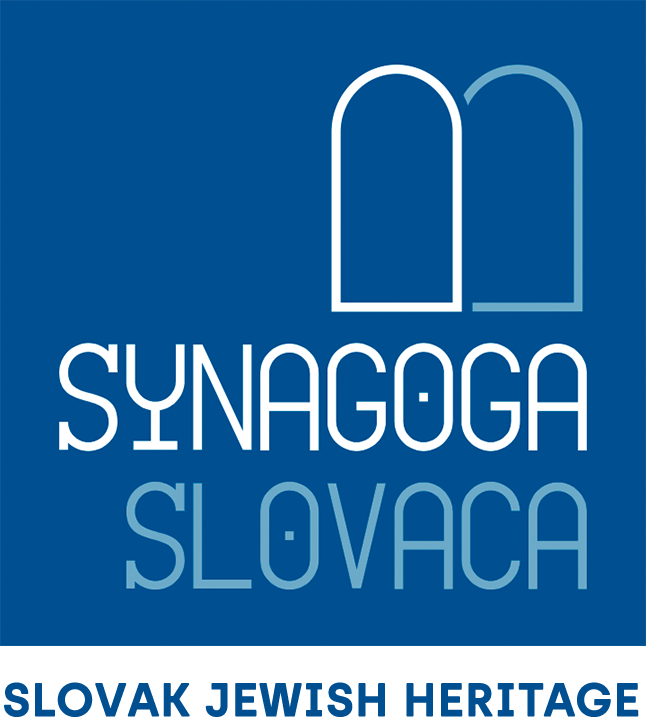Blog
-
Prešov, Jewish community compound
The Orthodox Jewish compound is centered around its magnificent synagogue, whose size and grandeur recall the prosperity of the community it served. This imposing building was constructed by the Košice-based company Kollacsek & Wirth in 1897-1898. The synagogue is still active as a house of worship. A permanent Judaica exhibition is installed in the former women’s gallery.
-
Nové Zámky, Synagogue
The Orthodox synagogue survives intact and is still used as a Jewish house of worship. Located on the eastern side of the former town fortress, the synagogue forms part of a Jewish communal compound. It is considered a local heritage site, and the neo-Romanesque façade is illuminated at night. The original interior has been preserved, with the bimah placed strictly in the center and the women’s gallery supported by cast-iron columns along three sides of the sanctuary.
Read more -
Nitra, Synagogue
The synagogue was built in 1908-1911 for the Neolog Jewish community. It was designed by Lipót (Leopold) Baumhorn (1860-1932), the prolific Budapest-based synagogue architect. The building is a characteristic example of Baumhorn’s style. A mélange of Moorish, Byzantine and Art Nouveau elements, it faces the street with a two-tower façade.
Read more -
Malacky, Synagogue
This synagogue is one of the most beautiful in Slovakia, a stunning monument to the Jewish community of Malacky. Designed by the Vienna-based architect Wilhelm Stiassny (1842-1910), it was built in 1900 on the site of a synagogue from 1886. Also designed by Stiassny, the original building was devasted by fire in 1889. A fine example of Moorish style architecture, its two towers, horseshoe arches, and typical red and yellow striping make the synagogue one of the most elaborate buildings in town.
Read more -
Lučenec, Synagogue
Constructed for the town’s Neolog community in 1924-1926, this colossal building is a grand memorial to the Jews of Lučenec. Surrounded by a typical communist-era housing estate, the synagogue narrowly escaped demolition in the 1980s. The building was designed by the well-known Budapest-based synagogue architect, Lipót Baumhorn.
-
Liptovský Mikuláš, Synagogue
An impressive edifice in the center of town, the synagogue is a blend of its various stages of construction. The original structure was destroyed by fire in 1878. Rebuilt, it was again damaged by fire in 1906. This time it was refurbished according to designs by the leading synagogue architect in the country, Lipót (Leopold) Baumhorn, from Budapest. Baumhorn retained the outer shell and neo-Classical portico with its Ionic capitols and tympanum.
-
Levice, Synagogue
The synagogue in Levice has been owned by the municipality since 1991, and in 2011-2012 underwent complete restoration. It is now used as a venue for cultural purposes. It was constructed in 1883 on the edge of the historical center, on a building lot created after the moat of the town’s former fortifications was filled in.
-
Košice, Puškinova Street, Orthodox synagogue
The Orthodox synagogue on Puškinova Street is one five extant synagogues in Košice – a silent witness to the rich Jewish past of Slovakia’s second city. Constructed in 1927 for the Orthodox community as a modern urban synagogue with adjoining Jewish school, it is still used by the Jewish Community of Košice as a house of worship, although the school building is no longer owned by the community.
-
Košice, Zvonárska Street, Orthodox synagogue
Košice’s most significant Jewish heritage site is the Orthodox Jewish community compound. The compound includes a historic mikvah (ritual bath), the offices of the Jewish community and rabbinate, and a small synagogue used for regular services. Next to it is a built-in sukkah with a sliding roof, which is still used. In the middle of the area stands the partially restored old Orthodox synagogue, which was used as library storage during the communist period.
-
Komárno, Menház
Today the center of Jewish religious and cultural life in Komárno, the Menház (former Jewish poorhouse) compound, built in 1896, comprises the former Jewish old-age home and its synagogue. A single-story, L-shaped, neo-Gothic complex with unplastered brick façades, the Menház stands at the intersection of two streets, with its main entrance on the corner. The synagogue is located at the northern rear side of the complex and has a charming Gothic interior that retains its original furniture and highly decorative cast-iron tie bars.











